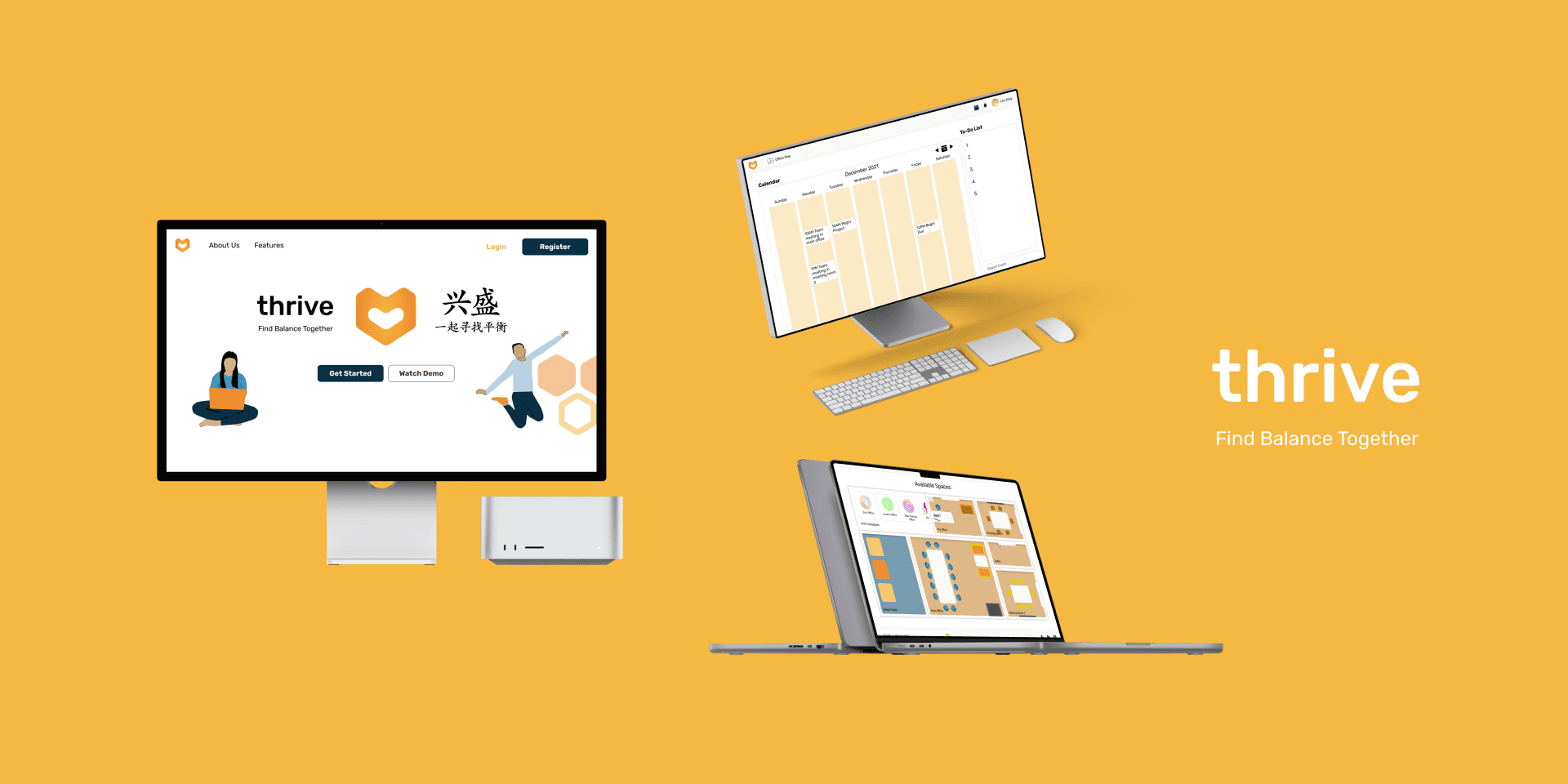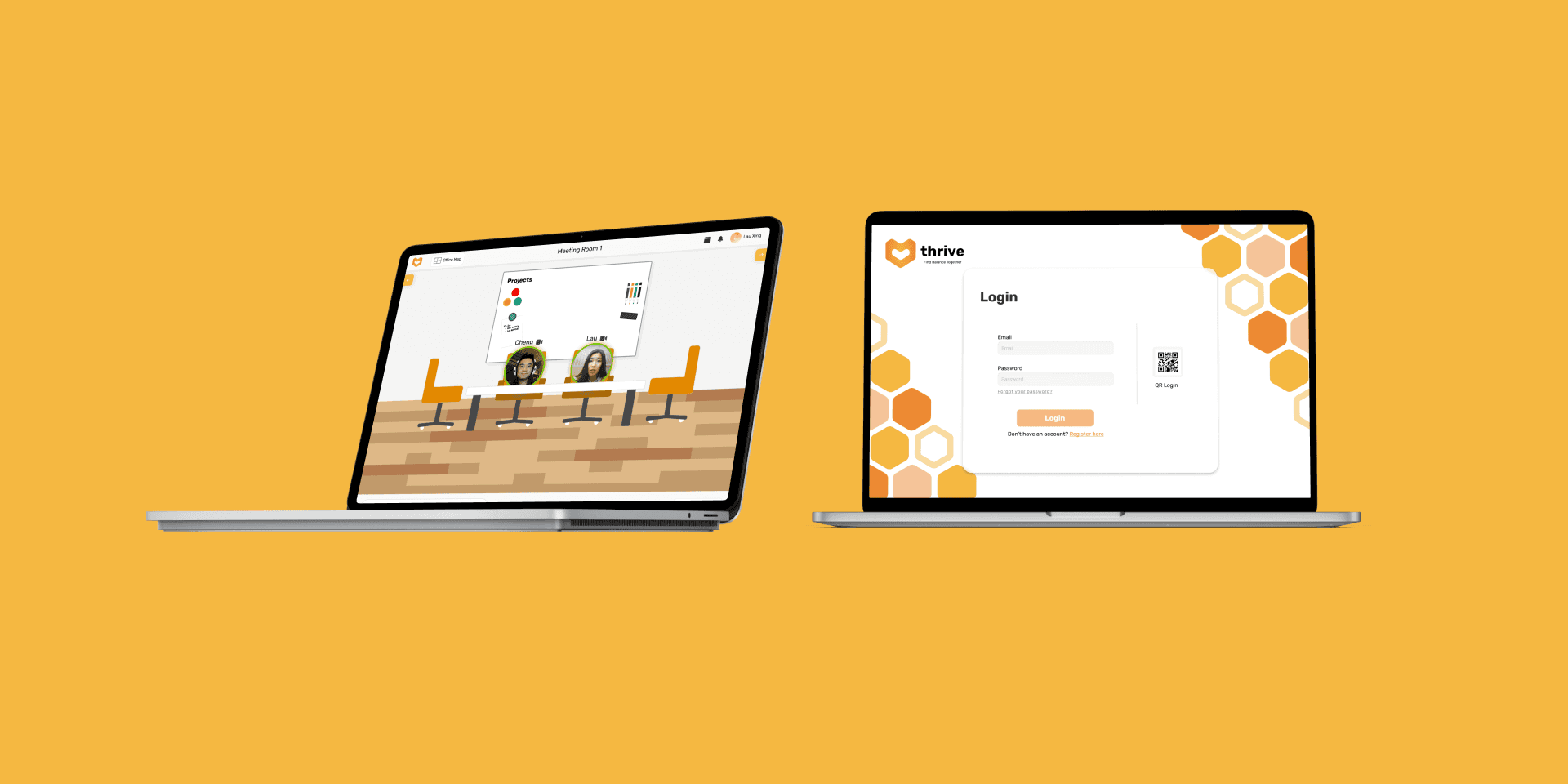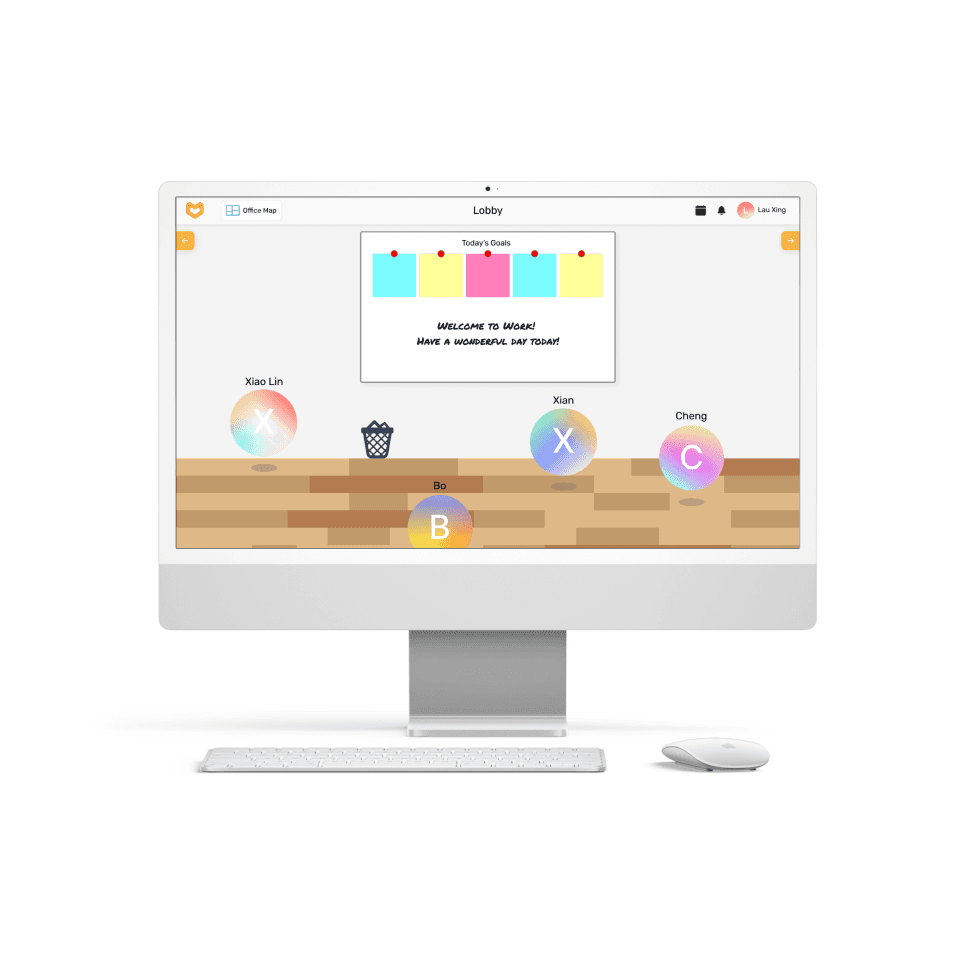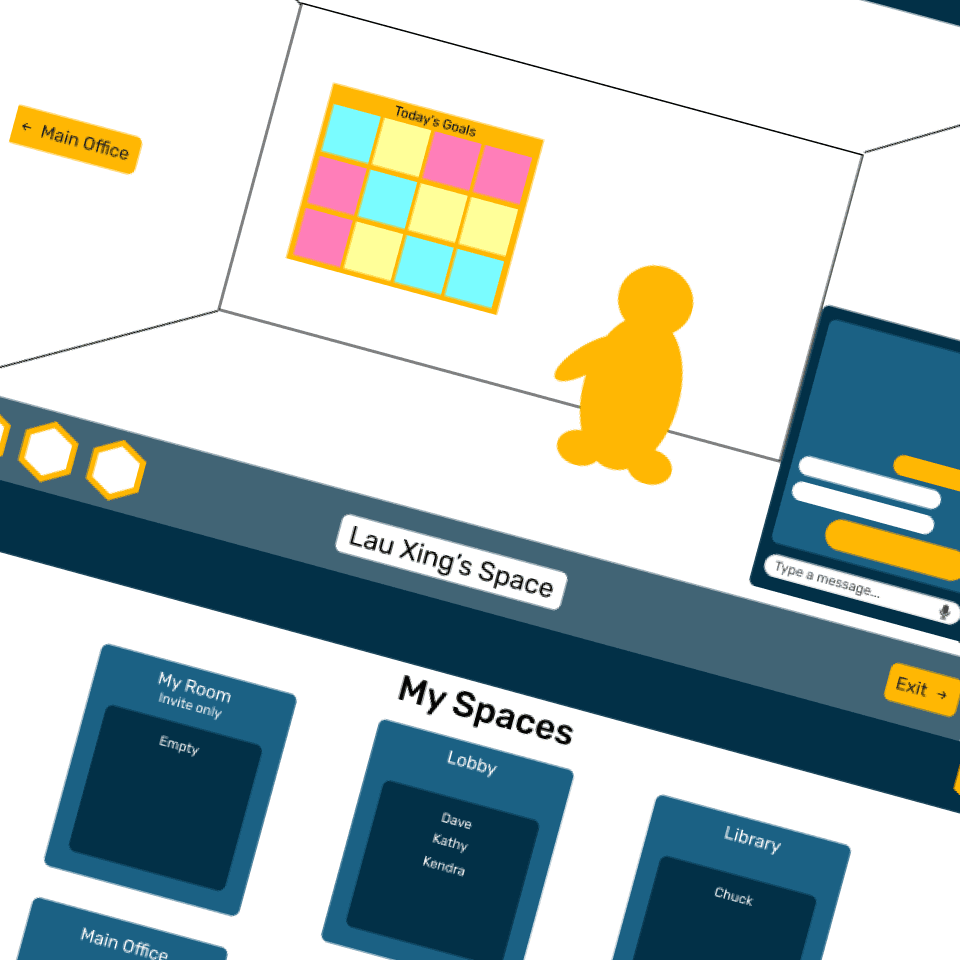The Brief
Thrive is a hybrid work application designed for the intense Chinese work culture, which promotes a healthy work-life balance by enabling remote work and in-person collaboration. As the UX designer for this project, I used a variety of design methods to create an application that is easy to use, efficient, and visually appealing.
The Process
Research and Analysis
To begin the design process, I conducted extensive research on the Chinese work culture, including the typical workday, work-life balance, and communication preferences. Through secondary research, we found that the majority of people feel frustrated by different problems they have with hybrid work. These problems included work-life imbalance, difficulty with communication and collaboration, inequality between those working remotely versus those in-person, and overall feeling less efficient and productive. These frustrations are worldwide and while we empathize with all of them, we noted that in China there is a prominent issue with the working culture in addition to the increase in the hybrid-working model. Through primary research, we confirmed that hybrid-working patterns have increased overtime working hours and added stress to our research participants. These have been catalysts for issues like deteriorating physical and mental health, social isolation, loss of motivation, and diminished productivity.
User Personas and User Flows
Next, I created user personas to better understand the needs and goals of different types of users. I then created user flows that catered to the different needs of each persona, ensuring that the app was easy to use and provided relevant information to each user. We narrowed down our users’ needs, experiences, frustrations, and goals while creating personas so that we could define what the key problem was. User needs included a platform that would assist in effective collaboration and help maintain and encourage a work-life balance for the entire team. Experiences included feelings of stress and anxiousness, long working hours that required constant communication, a lack of relationships outside of work due to overworking, burnout, and feeling that work has become their whole life. Goals included maintaining productivity and efficiency, maintaining trust in work relationships, building collaboration between office and remote workers, staying organized and focused, and reducing working pressure. Frustrations included work-life imbalance, a lack of good mental and physical health, and lost family time. Specific frustrations that arose from work were using too many different platforms that made communication and organization difficult.
Wireframing and Prototyping
We ideated through a couple of wireframes before getting to our first prototype and to user testing. Through user testing, we removed features such as a lockout feature, adapted user flows, and iterated through the process again. We combined all aspects of a healthy work environment into a one-stop shop for the user. Rather than focus on one aspect, such as physical activity breaks, we look to improve the user’s overall experience. Thrive focuses on all aspects of the virtual workplace, blurring the division between in-person and online. There are familiar features such as reminders and calendars. More unique features include a break room and highlight spaces. Thrive helps the user by focusing on healthy activity and genuine human interaction. Unlike competitors in the productivity app sector such as DingTalk, WeChat work, and Feishu, what makes Thrive unique is the emphasis we put on mental and physical health while working. I then created high-fidelity prototypes using Figma, incorporating design elements such as typography, colour schemes, and icons to create a visually appealing interface.
Usability Testing
I conducted several rounds of usability testing with individuals who fit my user personas to validate my design decisions and identify any potential issues or areas for improvement. Gaining feedback through various forms of testing from potential users and other designers helped to create more efficient and effective design choices that resulted in higher user satisfaction. We made changes based on user feedback and iterated on my designs until I was confident in the final product.

The Results
Final Design
The final design of Thrive is an intuitive, user-friendly application that promotes collaboration and work-life balance. The app features easy-to-use features, such as video conferencing and messaging, and provides users with a seamless transition between remote and in-person work. The app also features a visually appealing interface that reflects the target audience's preferences and culture.




